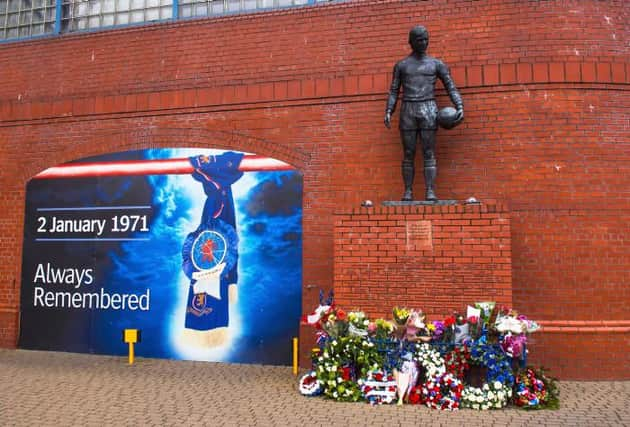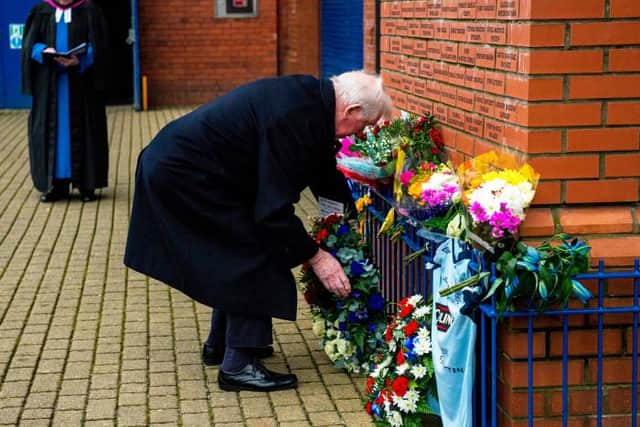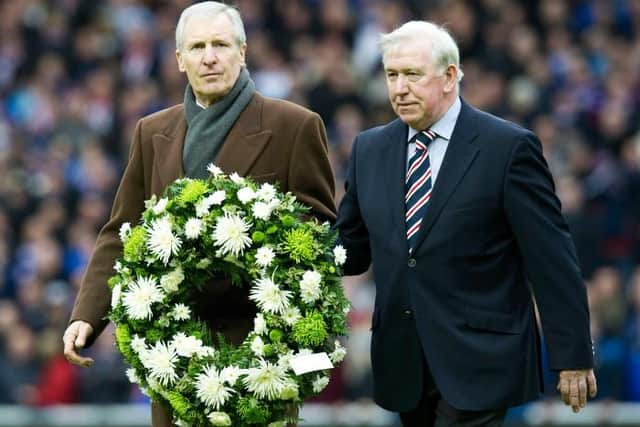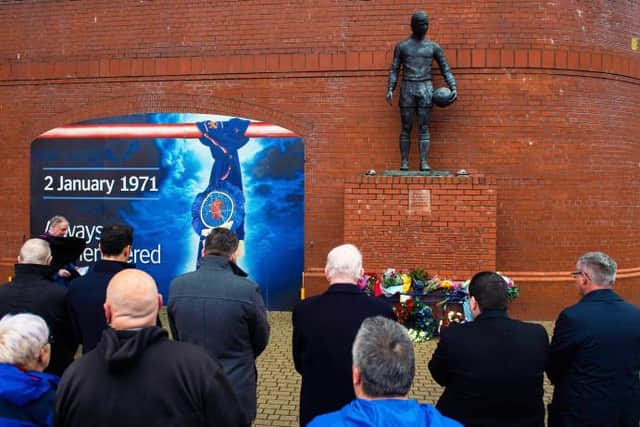Rangers legend John Greig reflects on the 50th anniversary of the Ibrox Disaster and a sense of loss which never subsides


On Saturday, just as he has done on an annual basis for so long now, the man himself will lay a wreath on behalf of Rangers in tribute to the 66 souls who perished amid the crush on Stairway 13 after the Old Firm match on January 2, 1971.
While for many there is added poignancy this year on the 50th anniversary of the tragedy, for Greig the recollections it prompts in his mind are consistently painful.
Advertisement
Hide AdAdvertisement
Hide Ad“I really can’t believe it was 50 years ago,” he told The Scotsman. “The passing of time certainly doesn’t make it any easier to reflect upon what happened.


“I’m very proud to lay a wreath every year. It’s also very humbling for my statue to be on that plinth above the memorial to the victims of the disaster.”
Greig was the captain of Rangers on that fateful afternoon when a relatively nondescript match against their greatest rivals, enlivened only in the closing stages when Jimmy Johnstone’s 89th minute opener for Celtic was immediately cancelled out by Colin Stein’s equaliser, was cast into irrelevance by the calamitous scenes which scarred Scottish football.
“You are talking about 66 people who went to a football match and never went home,” adds Greig. “It was a football match, not a war they went off to. It’s still hard to accept.
“While it still really affects me on a personal level, the ones I really feel for are the relatives of the people who died that day.


“They are the ones who have had to live with it ever since. It must be especially difficult when the anniversaries come around, at a time of year when everyone else is celebrating Christmas and New Year.
“I’ve got to know quite a few of the relatives down the years. After the wreath-laying ceremony, we always go inside the stadium and have a cup of coffee and a chat.
“I always appreciate how lucky I am to then be going home after the game to my wife, while so many others still have that empty space in their lives as a result of what happened in 1971.”
Advertisement
Hide AdAdvertisement
Hide AdGreig’s extraordinary 17 seasons as a player at Ibrox were littered with silverware, including the European Cup Winners’ Cup triumph of 1972, and his iconic status among the club’s support was underlined in 1999 when a vote bestowed the title of The Greatest Ever Ranger upon him.


At the time of the Ibrox Disaster, Greig was one of the more experienced members of the Rangers squad at the age of 28. But they were essentially a group of young men who suddenly found themselves as central figures in the aftermath of what, at the time, was the worst such incident seen in British football.
While many members of the Rangers board of directors were left in a state of stunned paralysis, it was manager Willie Waddell who took complete ownership of the club’s response to the disaster.
“He didn’t just make sure the club was represented by players and staff at every funeral, he made us visit the homes of every family who had lost someone,” says Greig of the man he regarded as a confidant and mentor throughout his career.
“When we turned up at their doors, we weren’t willingly accepted at first by some of them. That was totally understandable, given the grief they were suffering. But as difficult as it was, I think it did help bring some comfort.


“Going to a funeral isn’t a pleasant thing to do at any time but the ones we attended over that period were obviously more distressing than most.”
The Fatal Accident Inquiry into the disaster was critical of the failings of Rangers directors to properly address safety issues raised by previous incidents on Stairway 13. It also scotched the initial theory that the crush had been caused by some fans attempting to make their way back into the ground after hearing the cheers for Stein’s equaliser.
While Waddell’s handling of the days and weeks immediately after the disaster helped Rangers cope with the initial trauma, his actions over the next few years were just as significant.
Advertisement
Hide AdAdvertisement
Hide AdAfter moving into the boardroom as managing director of the club, he oversaw the radical redevelopment of Ibrox which was largely based on the model of Borussia Dortmund’s Westfalenstadion after it had been renovated for the 1974 World Cup Finals in West Germany.
The parabolic banks of terracing, including the Copland Road end which housed Stairway 13, were replaced by the three rectangular all-seated stands which complement the main stand and seated enclosure of the ground today.
“What Willie Waddell did, the way he responded to the tragedy, really was unbelievable,” says Greig, now honorary president of Rangers. “He said he would make sure nothing like that ever happened again and promised to make Ibrox the safest stadium in Britain.
“I remember Lord Justice Taylor came up from London to see Ibrox when he was compiling his report after the Hillsborough disaster in 1989 and I know he based a lot of his recommendations on how stadiums should be going forward on what he saw here.
“I always feel Ibrox as it is now is the most fitting legacy there could be to those who lost their lives on Stairway 13. But the sadness of that day will never leave me or anyone else who was a part of it.”
A message from the Editor:
Thank you for reading this article. We're more reliant on your support than ever as the shift in consumer habits brought about by coronavirus impacts our advertisers.
If you haven't already, please consider supporting our trusted, fact-checked journalism by taking out a digital subscription.
Comments
Want to join the conversation? Please or to comment on this article.